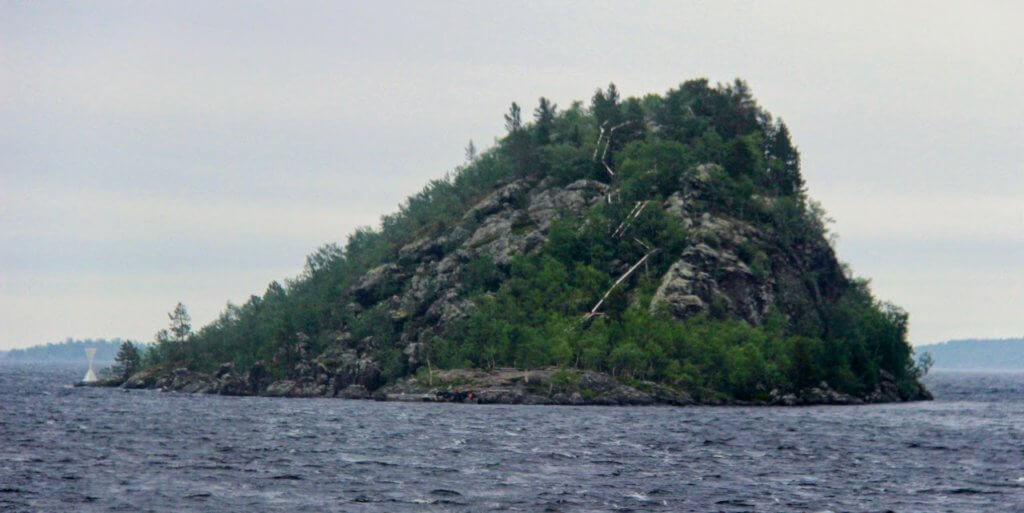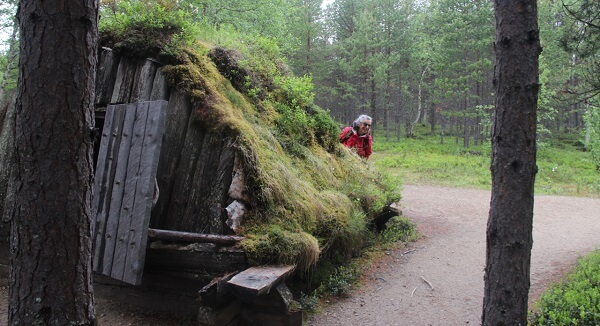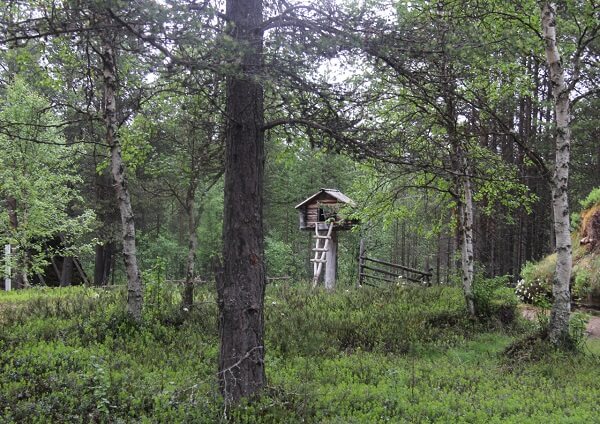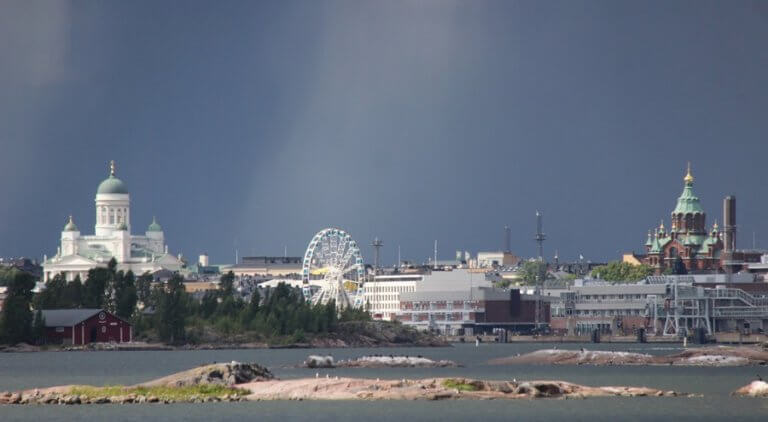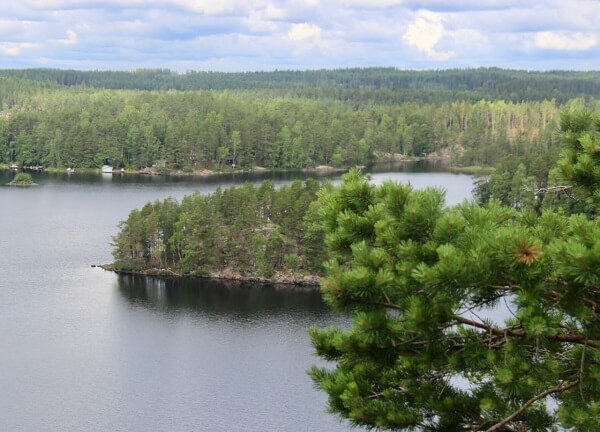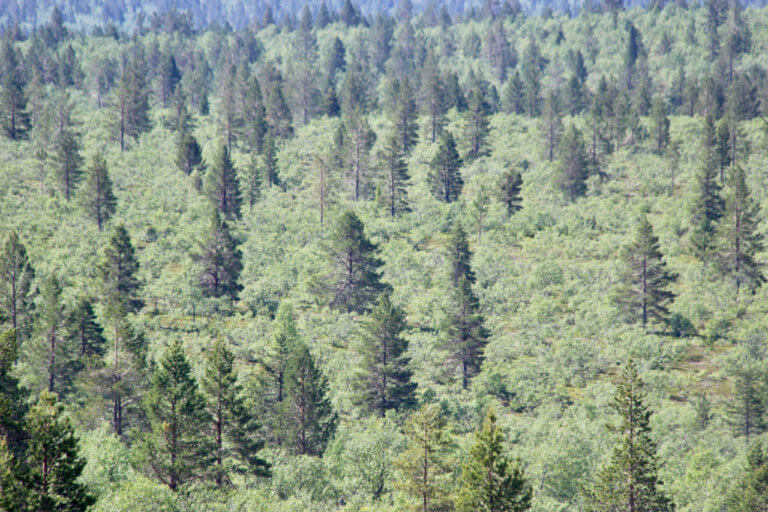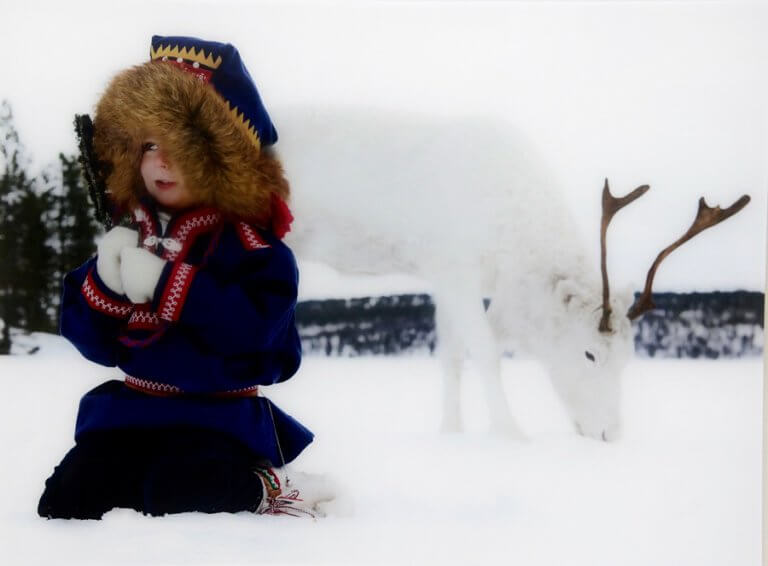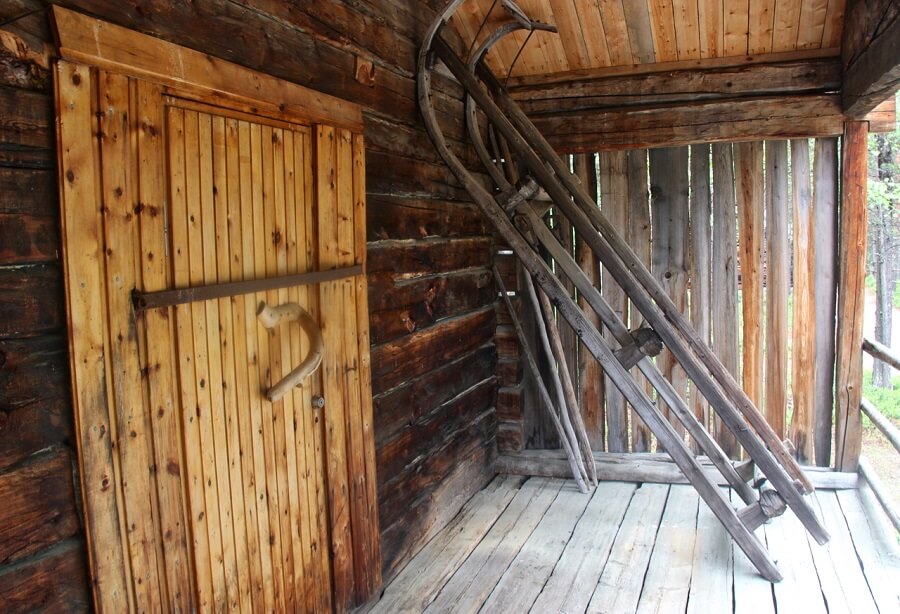
Day 150 July 14th 2017 Inari – Sami capital
What a fascinating day! Well maybe I should say – another fascinating day in a long line of fascinating days!
Today was mostly learning about Sami culture and life in Finnish Lapland. This included visits to the Sami Parliament, SIIDA – the Sami Museum and Northern Lapland Nature centre. And a cruise on Lake Inari out to Ukko’s Rock – a sacred site of the Sami. It all came with a dizzying amount of learning.
The Sami people are said to be the only indigenous people of the European Union. Descendants of people who “first inhabited the area after the last Ice Age” – that means an incomprehensible 10,000 years ago (‘Sami in Finland’ brochure, Samediggi).
As with many indigenous cultures across the world, colonisation and changes brought about by outside people – changed their way of life. Arbitary borders drawn up, and fences built between Finland and Norway prevented the continuation of the old Nomadic Reindeer herding lifestyle and culture. The Second World War meant many groups were “relocated” from their original lands.
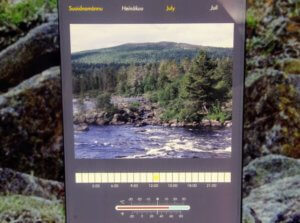
The first part of my day at Siidi Museum was spent following the Arctic circle seasons for 12 months from white through to darkness – via an extensive display of photos, information and examples of flora and fauna.
Somehow circling this exhibition brought home the nature of living with darkness for the majority of the year and then sun and white light for a short period of time. It reinforced we both would like to experience such a year in the flesh. I figure this would also tick off my number one bucket list item – to see the Aurora Borealis.
Then on to the different areas of Sami life – constantly a reminder of how harsh life appeared to be. Demonstrated firstly through a photographic exhibition collected from photographers, local families. Followed by the permanent exhibition describing many aspects of Sami life – housing, transport, reindeer husbandry, clothing, sewing, tool making and so much more.

In my thoughts it kept linking to our recent learning about the community on the Blasket Islands in Ireland. Harsh climate and living conditions – yet people thrive and adapt to the environment.
Despite looking into this life thinking how harsh it appeared – babies were still born, people still loved and committed to each other, communities were built and grew and people loved their home. So much has changed in our life now with all its instant contact and technology. So much adaptation we can no longer even really imagine living your life only knowing the people, life and seasons within your realm. Giving birth alone, in harsh Arctic conditions. Raising babies without any of the modern aids and assistance. Living without sunlight for months of the year.
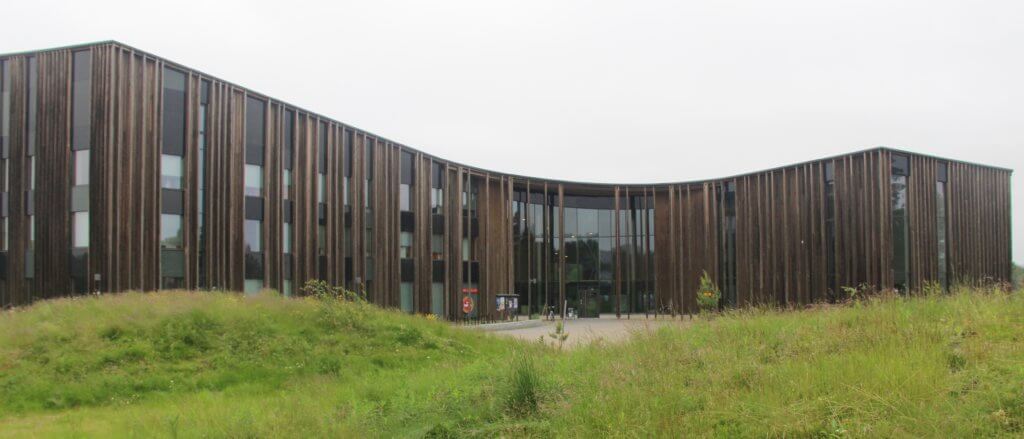
At the Sami Parliament we joined a short tour and learned so much. Established in 1995 the Sami Parliament represents the Sami people though does not have voting power in the Finnish government. It does have a key role in developing and maintaining Sami indigenous culture and language. It does not have a strong voice in Finnish government but it does have a role and voice. The Parliament has 21 members and 4 deputy members elected every 4 years. The parliament meets 4 times each year and is lead by the only full time position – the President. Shamefully when our guide learned where we were from she responded “Oh it is not good what is happening with the Aboriginal people there”.
Between visiting the Museum and Sami Parliament we had a boat trip out on Lake Inari on a windy, whitecap kind of day that left us wishing for our warm leggings and hats. Summer?
We travelled out on a cruise boat to Ukko’s Rock where we were able to get off to walk up to the top of this tiny island and view some of the 3,000 islands and some of the 1040 square kilometre expanse of Lake Inari. Surrounding us were islands of all sizes including some that appeared like the tips of mountains with a single tree resolutely growing from the visible peak.
My Kiwi nature had bought along lunch instead of buying it at Scandinavian prices. I imagined us relaxed and eating the spread while sitting in the sun in the grounds of the museum. Instead this became a hasty put together cheese and flat bread as we cruised out to Ukko’s Rock.
The Outdoor museum at Siida provided insight into the types of dwellings used by the Sami people over time. Turf huts covered in colourful lichen and wildflowers, Kota – Tipi like dwellings with double arches of wood surrounded by poles – once covered by skins, then wool and more recently canvas. And log cabins of all shapes and purpose.
A Sample of What We Got Learned Today
- There are 4 Sami languages spoken today. The number of people speaking the languages has increased since the 1960s. The Sami parliament has an intensive program for teaching all four languages.
- There are approximately 75,000 Sami people in the world. The total number of Sami people in Finland is approximately 10,000 with only about 35% living in this area.
- Costumes of the Sami groups have evolved, incorporating the peoples who have come to Sami lands over time – eg Medieval influence, Russian styles in those closer to Russia.
- The woven ribbons and bands on the clothing identify the region and group a person is from. They tell a complex family story that many older people still ‘read’.
- Hay carefully dried and softened was put inside the Reindeer skin boots to keep feet warmer.
- The turned up toes on shoes is to enable skis to be attached more firmly.
- Reindeer were closely linked with life of the Sami – transport, milk and blood for food, sinew for sewing, bone for tools, skin for clothings, housing and warmth. Every part of the reindeer was used by the Sami.
- The reindeer were tagged on the ear to denote who they belonged to – this marking was also a family tree of a Sami family – with each person in each generation having a slightly different marking.
- Reindeer Husbandry is strongly linked with Sami culture with knowledge once handed down from generation to generation. And still passed on through studies and courses.
- Many words in Sami language describe the type of reindeer, antlers, sex, appearance etc.
- Bears hibernating through Winter – in addition to the slowing of heart and ate they ate ants nest and foliage which forms a plug to stop them pooing while they hibernate!
- Sami people transcend current country borders – a reminder of the impact of colonisation and globalisation.
- Throughout time and across the world – sometimes 1,000s and 100s of thousands of miles apart similar developments occur. Sami Kota looked like the Tipi of the First Nation Plains peoples of America and Canada. Sami Nili – the food storage hut, looked like the Maori Pataka -or ancient food store.
At the end of the tour of Sami Parliament we were shown a short doco on the Sami people. We were shown into the Auditorium in the Sami Parliament building to view the movie. As the door opened the expanse of the auditorium and rows of light wood chairs with wool covering, and wood panelled walls is overwhelming.

The 2017 documentary presents many aspects of current Sami life, culture and landscape. I went searching for more about the film. In searching – which produced nothing –
I found other movies that would be good to watch –

